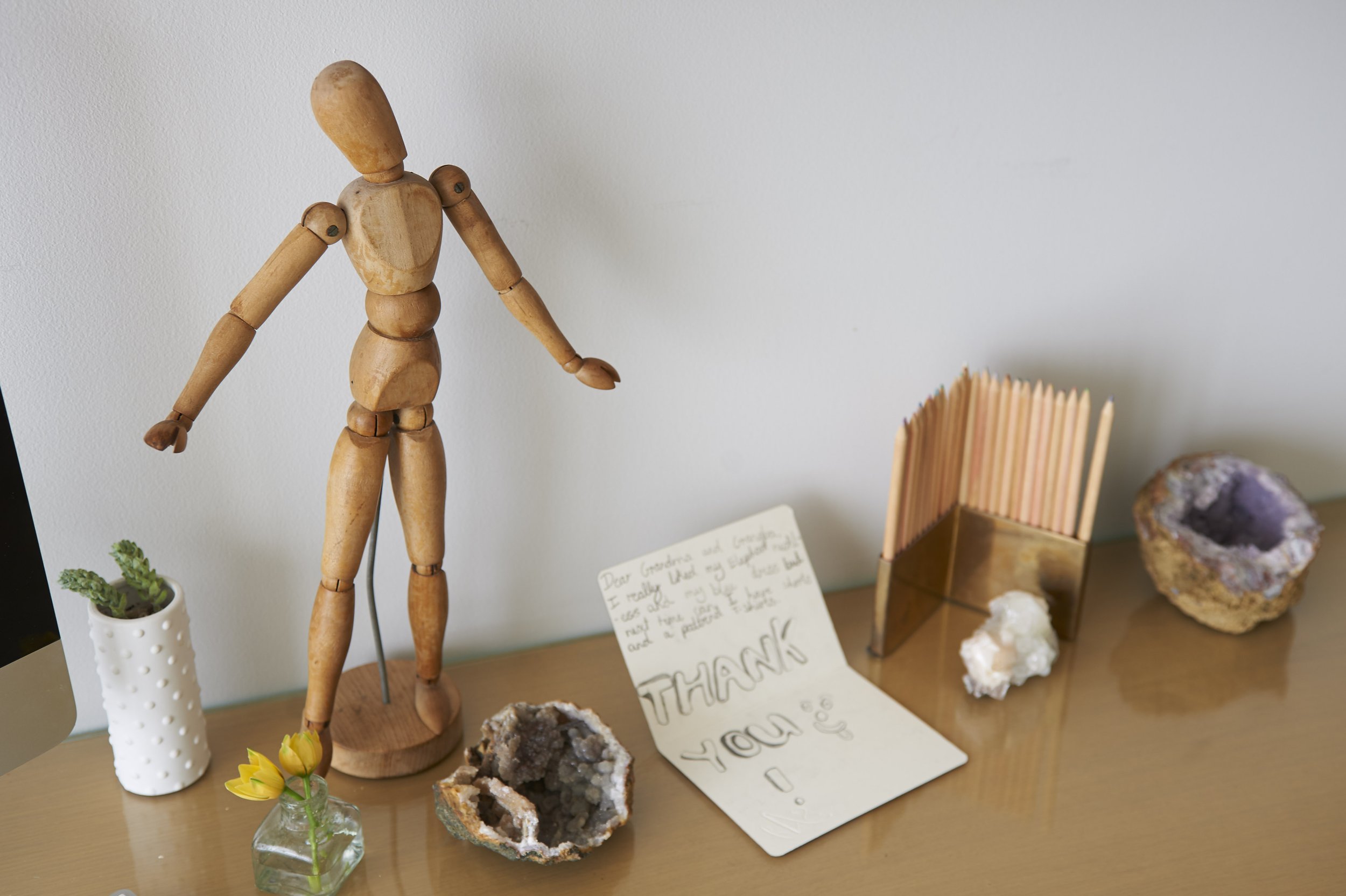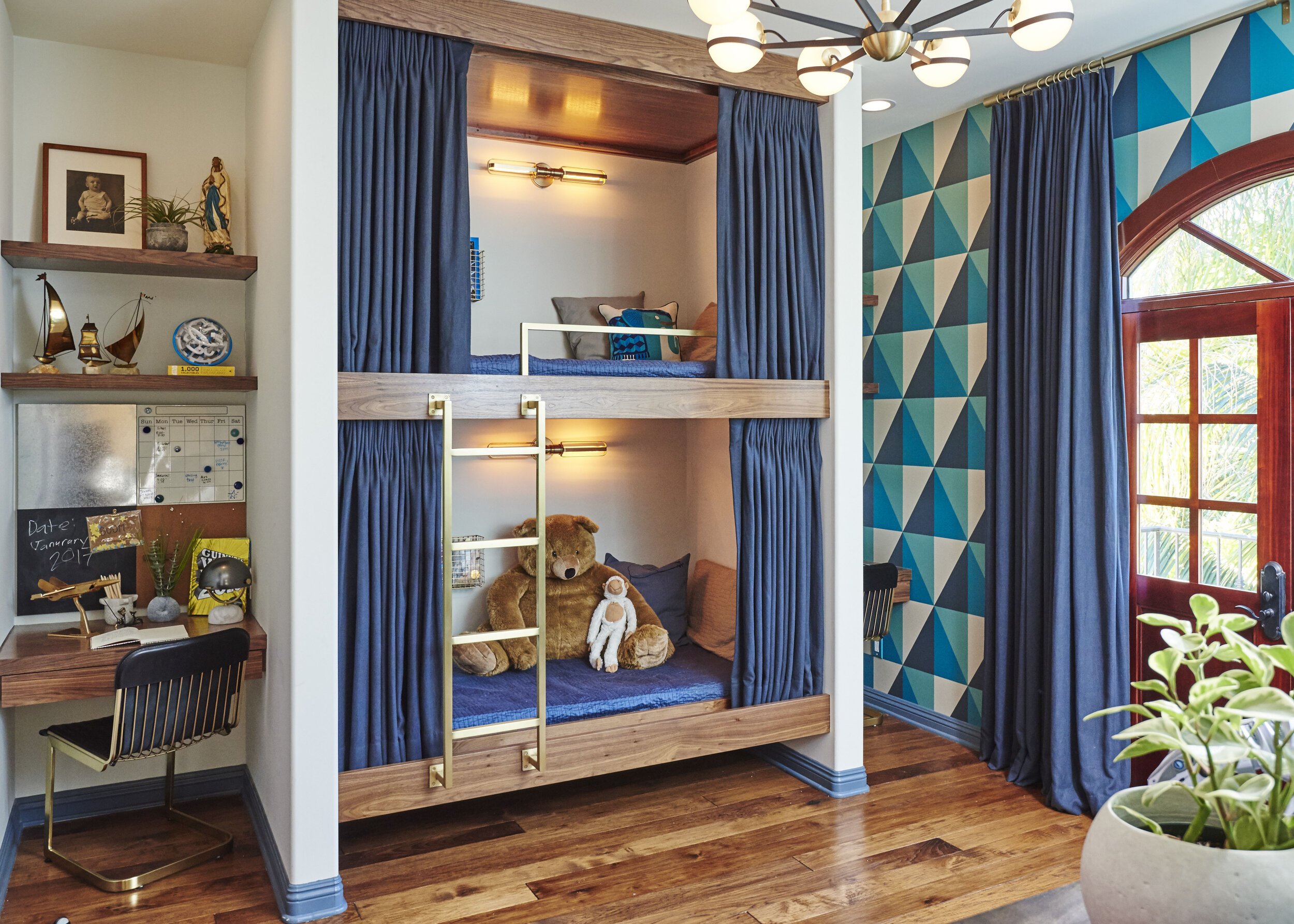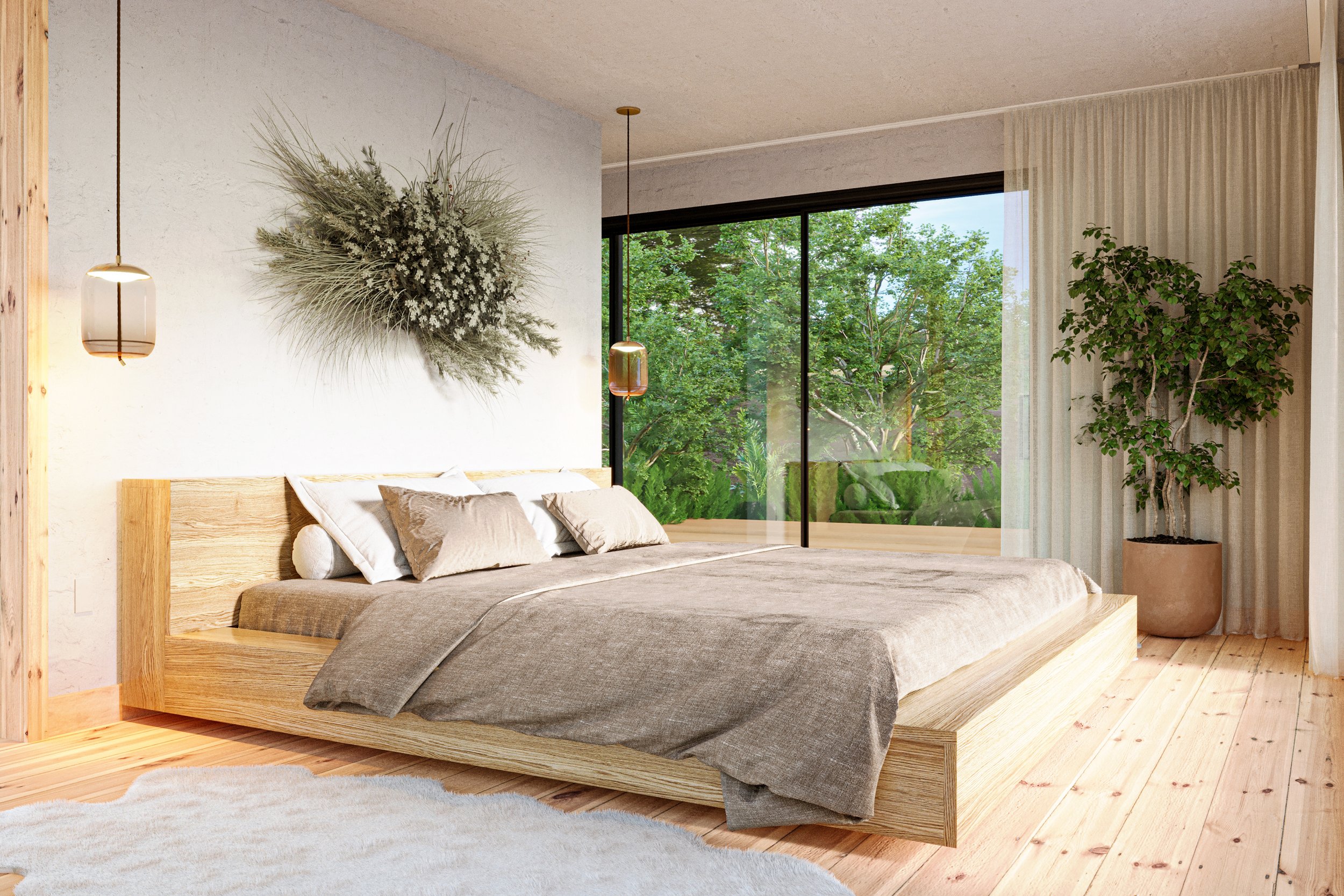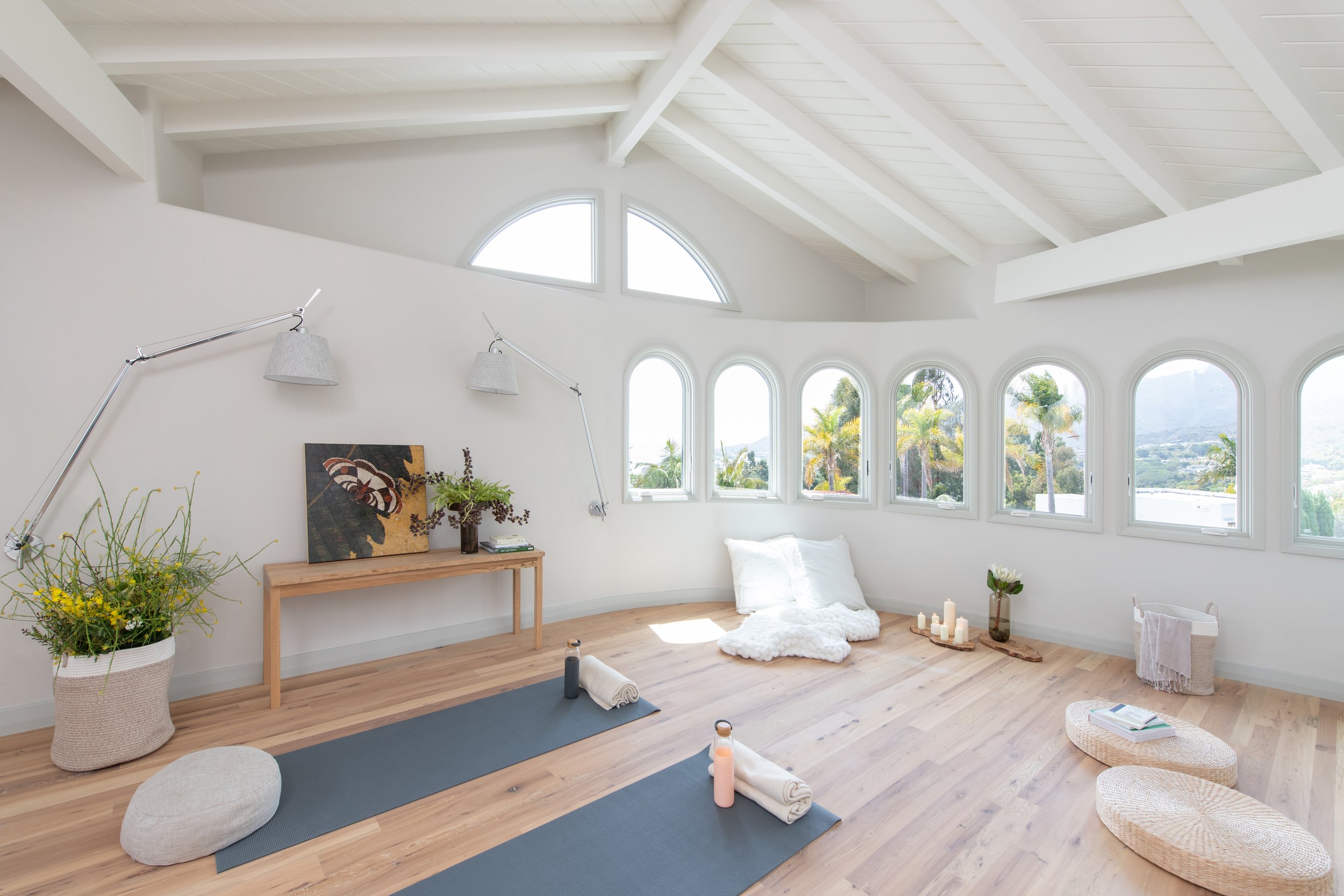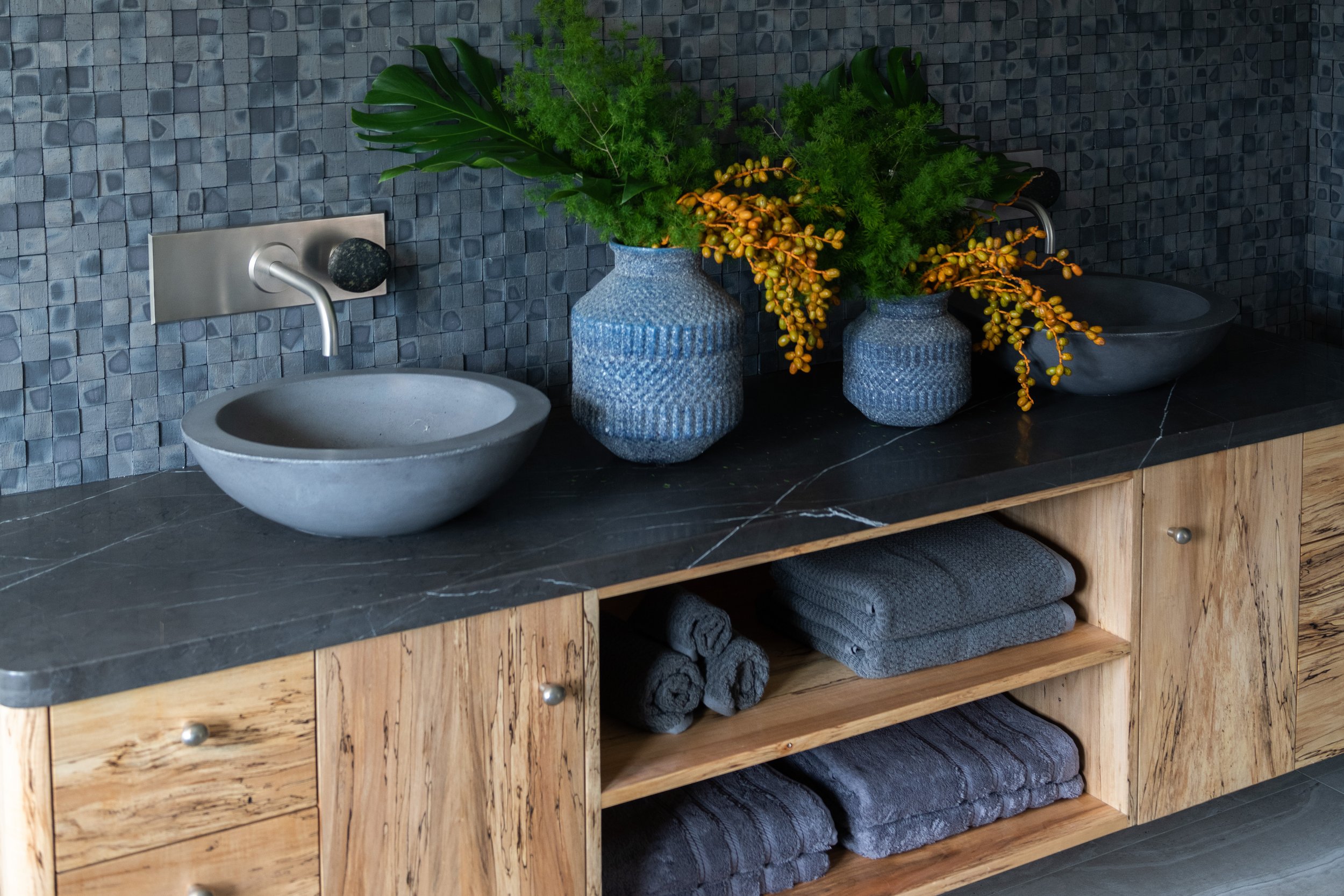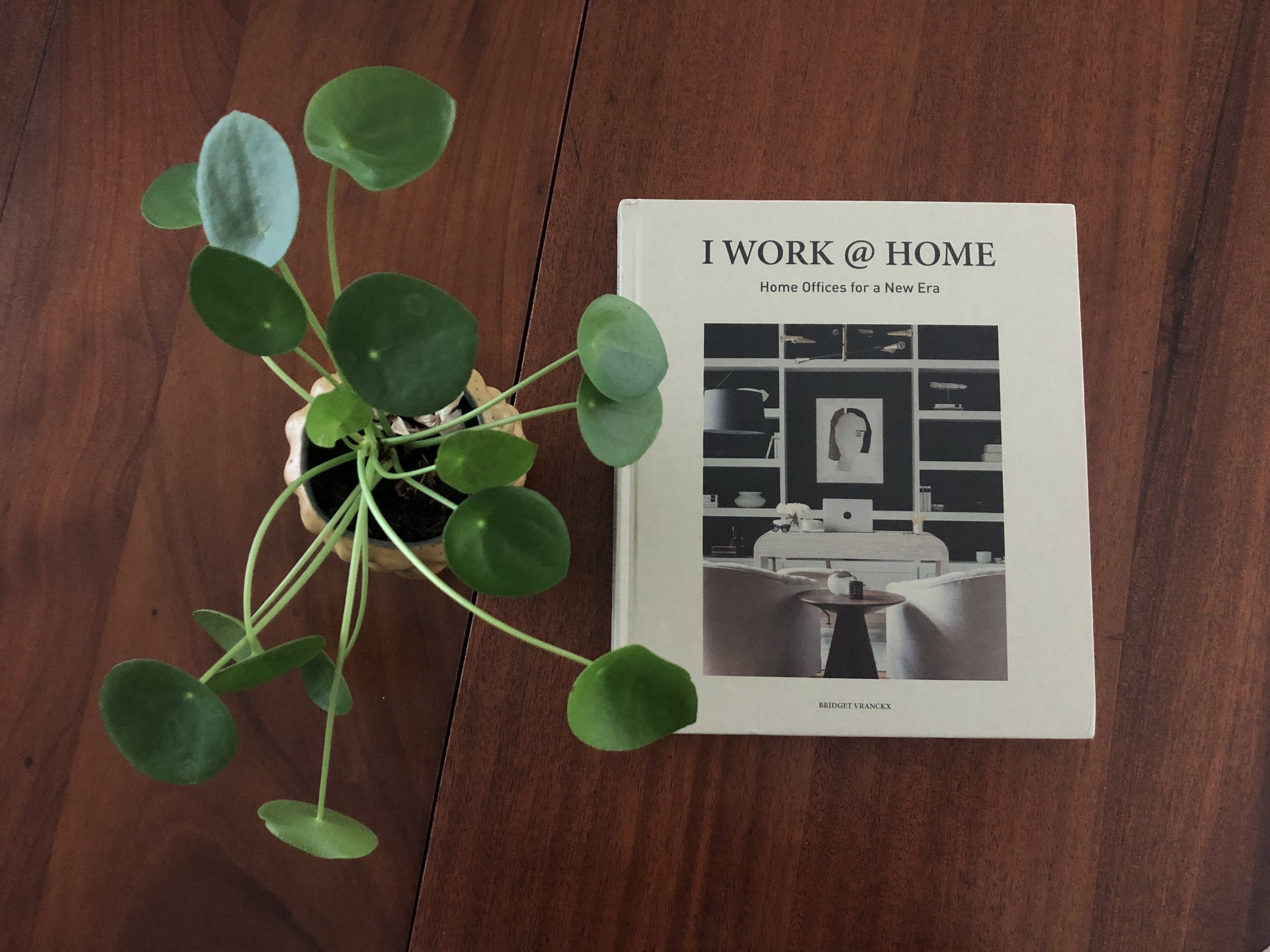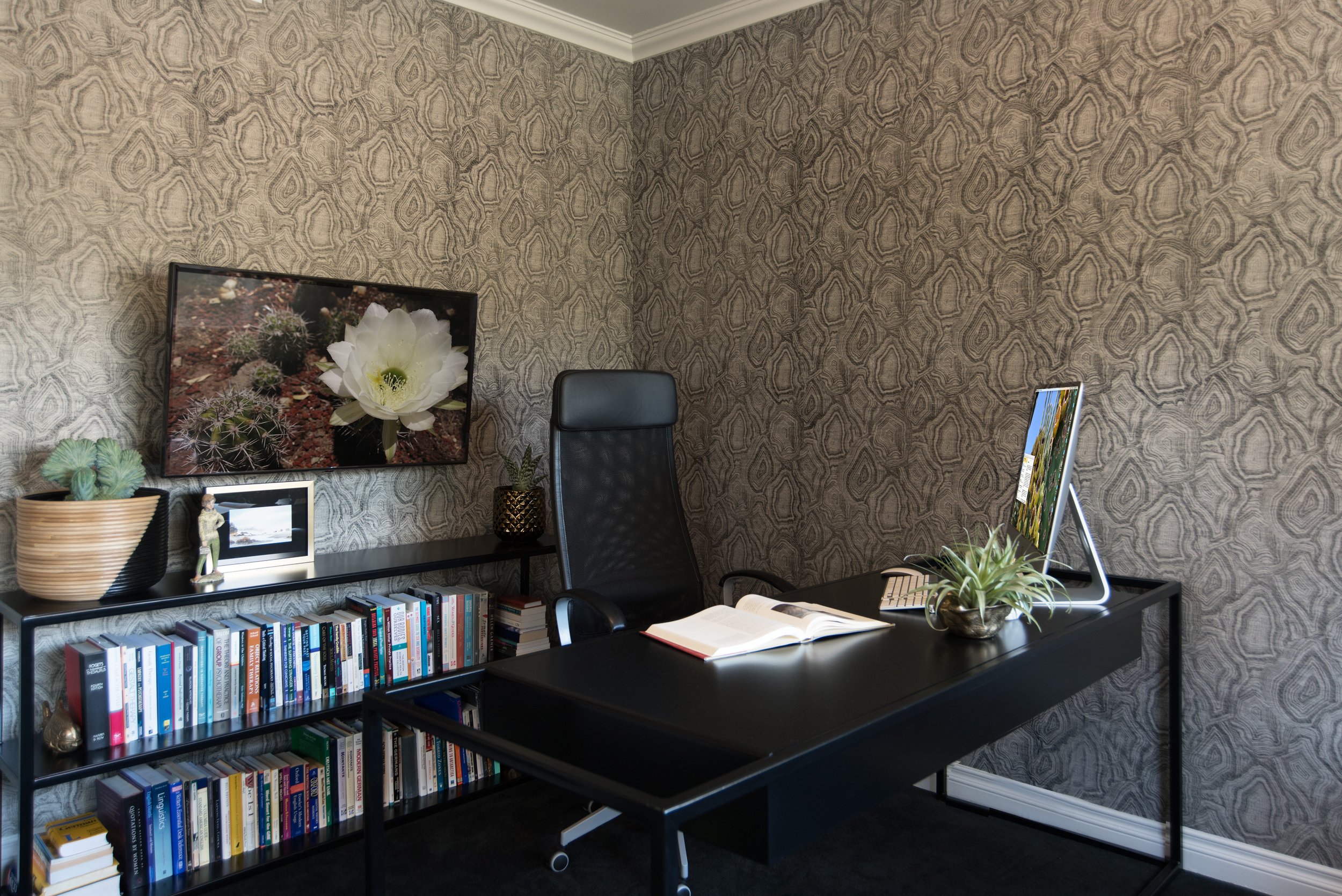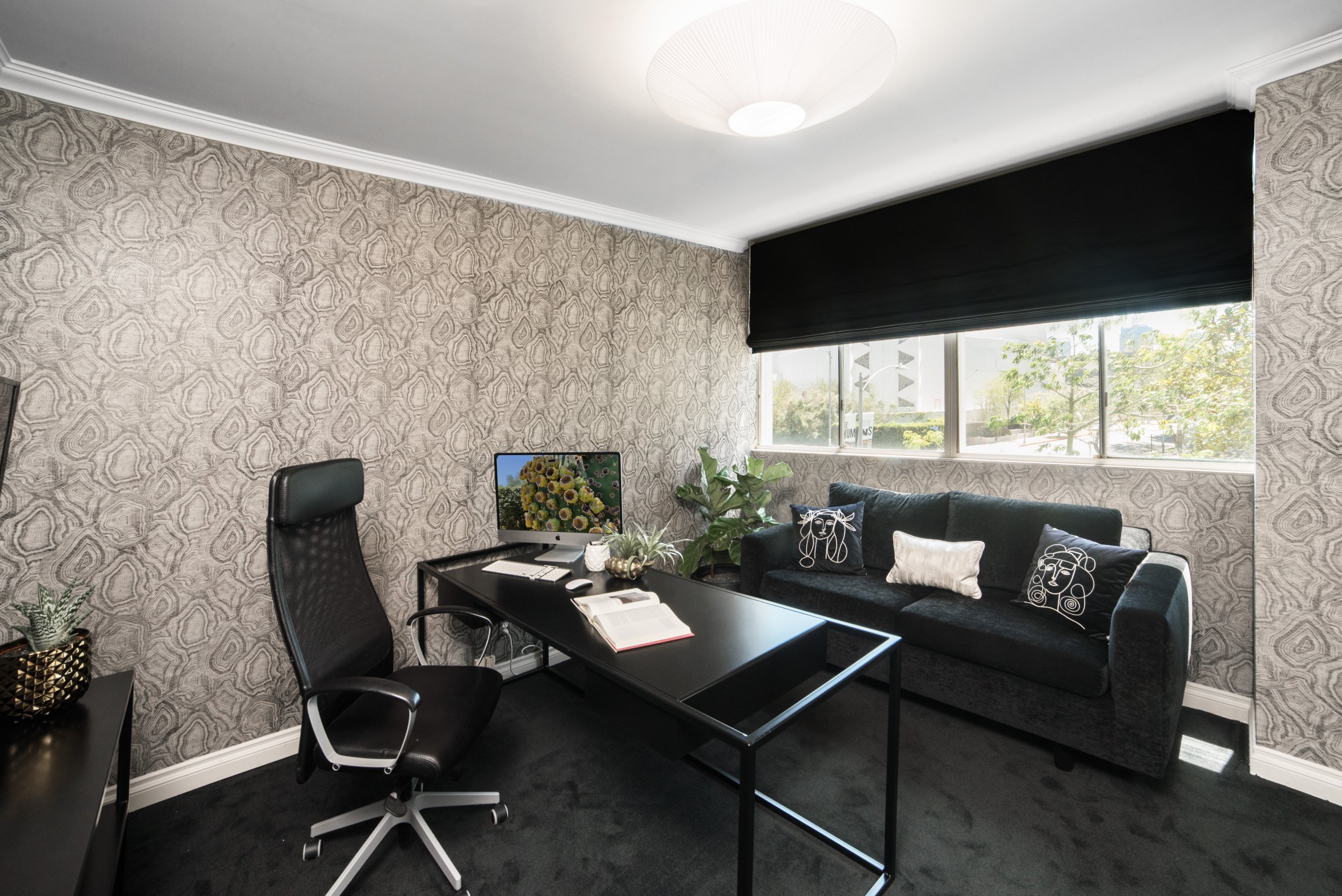Deeply Personal Design Process
/Our homes are incredibly personal and intimate; they reflect our personalities, relationships, passions, and goals. Inviting an interior designer into our home spaces and lifestyles can feel like a big step, but having someone to help navigate the many facets of our homes and realize them into a design concept can be a rewarding and fulfilling process. Many of us may have strong preferences or see images, colors, or designs that can cause a feeling of joy. What can be challenging is finding ways to integrate aesthetic leanings into our daily functional needs. Personalized design can create flexibility through customization and specificity, offering space for our design dreams to be applied to a home that can physically and emotionally serve us.
One of the foundations of a functionally supportive space is ergonomics. While ergonomics is often considered for workspaces, it's important throughout all living areas, impacting our comfort, energy levels, and interactions with our home. Some ways we can integrate ergonomic design into our home include custom furniture and counter heights that can encourage better posture and physical ease on joints. Arranging televisions and screens to avoid glare so we can watch entertainment unobscured and comfortably. Sensory elements such as soft close doors and cabinets can reduce abrasive noises throughout the home, contributing to a calm, serene, and mindful environment. And devising layouts that encourage movement or an organic flow of foot traffic can help to reduce mental and physical stress throughout the day.
Design is always a collaborative process, particularly in shared home spaces where multiple desires, needs, and personalities must be considered and supported under the same roof. Our homes can be custom-designed to support the specific needs of our family. For families with young children, designing a space for play and custom storage options for toys can promote tidiness, order, and quiet throughout the home. Carpeting and furnishings made from robust materials that can be spot-cleaned are ideal to resist day-to-day wear and tear. Custom kitchens can be designed for large families to contain additional cold food storage concealed neatly within specialized cabinetry.
Sensory details play an essential role when designing custom spaces for neurodivergent children. In past projects designed for children with hypersensitivity, window treatments were a successful way in which we could help diffuse and regulate both light and environmental noise to encourage a feeling of calm within the home. Past projects designed for hypo-sensitive children were very different spaces; here, we created an engaging and stimulating environment featuring bright colors and soft custom climbing areas designed to encourage play.
Our home can also be customized to support caring for an elderly loved one. Bespoke furniture can be ergonomically designed to lessen stress on the body and support ease of movement in day-to-day living. Smart lighting options that can be remotely controlled and bathroom modifications such as grab bars, lever or touchless motion-activated faucets, and custom counter heights can also help facilitate independence and wellness.
Trauma-informed design can help create healing, restorative spaces that support recovery from trauma and post-traumatic stress. With trauma-informed design, the process is intended to create a safe and inclusive environment where we can feel comfortable honestly expressing our design needs. Individual sensory needs are incorporated with our aesthetic tastes through design elements such as color, texture, and other sensory elements, incorporating biophilic design to create mindful spaces where we can relax and regenerate.
Pets are another member of the family to consider when designing our home, and pet-friendly fabrics can be a great way to incorporate their accessories. Consider a custom pet bed made from a favorite washable fabric or reupholstering furniture that could use a bit of a freshen-up. Sturdy materials that can be spot-cleaned, such as recycled fibers, are also an excellent option for rugs and carpeting in a pet-friendly home.
Hybrid work and working from home have become commonplace, increasing the need for dedicated spaces that create a boundary between work and everyday life. Some considerations for these spaces include noise reduction or soundproofing for virtual meetings and focus, ergonomic furniture, adequate lighting, color choice, and biophilic design, all of which can contribute to creating a mindful workspace.
When we consider our home spaces as reflections of ourselves, interior design can integrate aspects of our personalities, personal histories, ethics, and values. These considerations may include sustainable or vegan design or a home that reflects our desires for socialization or privacy. They may also include home spaces that reflect cultural histories or find ways to integrate important memories or personal milestones.
A holistic approach to vegan design moves beyond simply excluding materials made from animal products, creating a home that reflects a mindful connection and awareness of our place within the planet's broader ecosystem. Eco-friendly, ethically sourced materials such as bamboo silk or textiles and wallpapers made from cruelty-free plant-derived materials are free from animal products, can have low or no VOCs, and are environmentally conscious in their manufacturing. Re-wilding our yards with drought-tolerant indigenous plants is a great way to nurture and support our home's natural ecosystem by creating an environment that attracts and sustains local wildlife and pollinators. Biophilic design is a great way to enjoy the serenity of this natural environment within our homes. Incorporating materials and patterns that reference natural imagery can encourage mindful connectivity between ourselves and our surrounding natural environment. Also, incorporating technology that works with our local ecosystems, such as rainwater storage, greywater systems, and solar panels, is a small contribution that has the potential to make a positive environmental impact collectively while creating self-reliance at home.
Our home can also be designed to incorporate objects and collections that are important to us or reflect our cultural identity. Including these objects in a beautiful, functional, healthy home creates a self-portrait that reflects our uniqueness. Being surrounded by objects that contain cultural significance, happy memories and bring us joy has the potential to make a restorative, joyful space where we can authentically be ourselves.
Unique, one-of-a-kind home attributes can also be a valuable way to turn our home spaces into havens of joy and comfort. For those who find serenity in botanical spaces, a custom glass greenhouse that doubles as a wellness space can become a favorite retreat that adds a sense of wonder to the home. Having an indulgent space for privacy, like a personal dressing room, screening room, or in-home spa, can feel like a personal oasis.
A dedicated wellness space, such as a yoga or meditation room, encourages a daily practice of mindfulness and self-care that can benefit mental and emotional health. Sensory details such as color, texture, lighting, and noise can influence a room's emotional effect and comfort. Color has the ability to energize or soothe us; a cool neutral palette, such as soft earth tones, can contribute to a feeling of calm. Adjustable lighting, lamps, and automated shades can regulate light levels within a space. Soft-closing doors and drawers, high-pile carpeting, and rugs can be utilized to minimize environmental noise and help create a calm and quiet space. Custom storage solutions can also be used to declutter a space and create calm.
Having areas slightly separated from the home can also create room for a design departure, adding to the feeling of variety. Many may be interested in creating opportunities for connection in their home, with spaces for education or gathering. Rooms for meditation or sound baths with friends and neighbors or music and creative spaces designed to share with close friends and loved ones can help create feelings of connection for those who enjoy their homes as social spaces for gathering.
Slow design is a deeply personal design process that allows us to slow down, truly consider, and discover how our home can support us in living our best and most joyous lives. A holistic approach to interior design, slow design takes time to create a layered and highly personalized home design that considers how our home can support our day-to-day needs, creating a space where we can thrive.
Creating a home that profoundly reflects ourselves can be an enriching and fulfilling experience. Custom-made objects and designs for our home can be sourced from quality, eco-conscious materials intended for lifetime use. These highly personalized one-of-a-kind objects exude luxury through their superior quality; slow design fosters connectivity with the materials and craftsmanship of these heirloom objects and our home. Slow design is often better for the environment as materials can be ethically sourced, and objects that are made with intentionality can incorporate waste reduction into the process. Building relationships with local skilled artisans and craftspersons also creates positive connections and support within our local community.
Slow design also utilizes 3D rendering to help visualize how the home design will look and feel. While renderings take time to develop, they help alleviate stress or indecision when considering multiple options or directions for the design.
A holistic approach to designing personalized spaces can help create home interiors that feel like an extension of self, a space that promotes personal growth and fulfillment. Exploring opportunities to make home changes or incorporate customization can expand our ideas around restorative spaces to create a home environment that enriches our daily lives and brings us joy. Embracing personalized home space can offer room for exploration and peace, where we can celebrate ourselves, our loved ones, and our environments.
Sarah Barnard, WELL AP + LEED AP, is a leading designer of personalized, sustainable spaces that support mental, physical, and emotional wellbeing. She creates highly personalized, restorative spaces that are deeply connected to art and the preservation of the environment. An advocate for consciousness, inclusivity, and compassion in the creative process, Sarah has appeared in Architectural Digest, Elle Décor, Vogue, HGTV, and many other publications. In 2017 Sarah was honored as a “Ones to Watch” Scholar by the American Society of Interior Designers (ASID).


